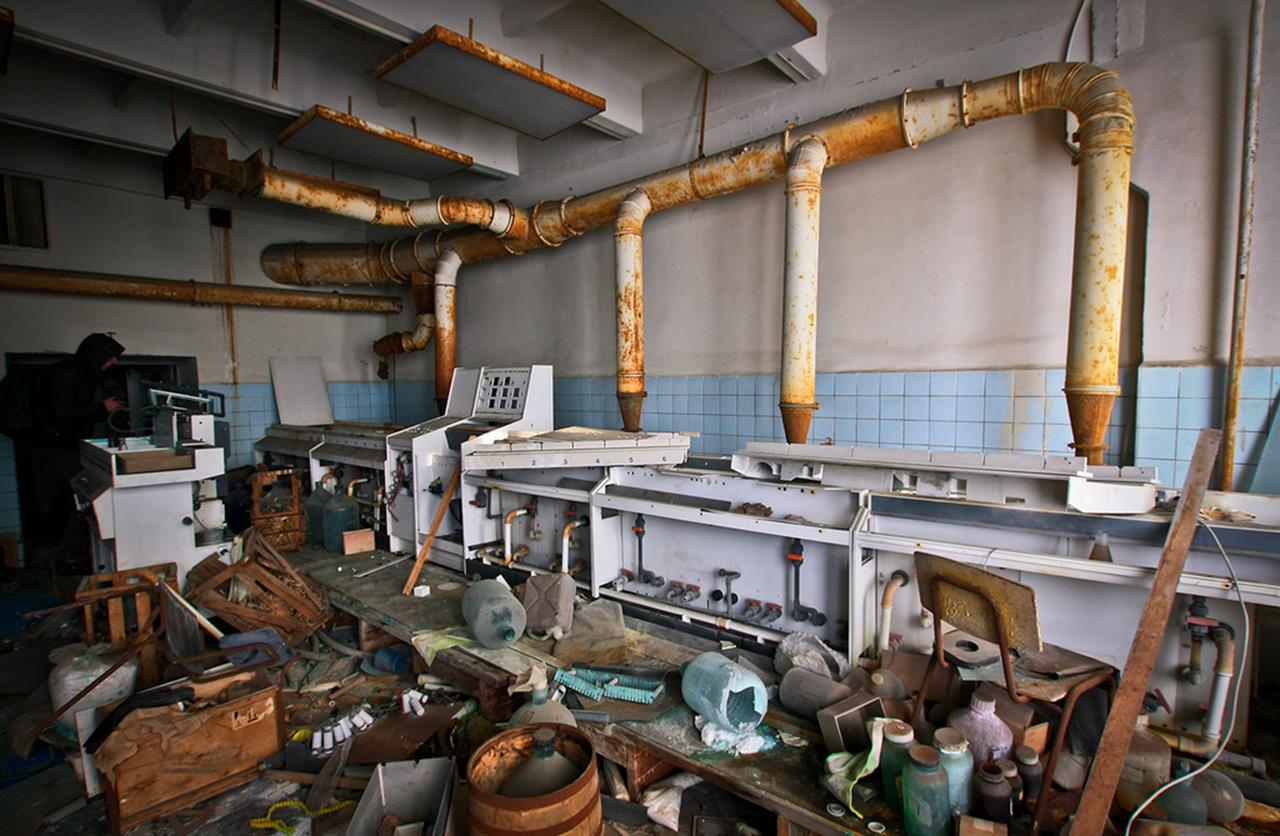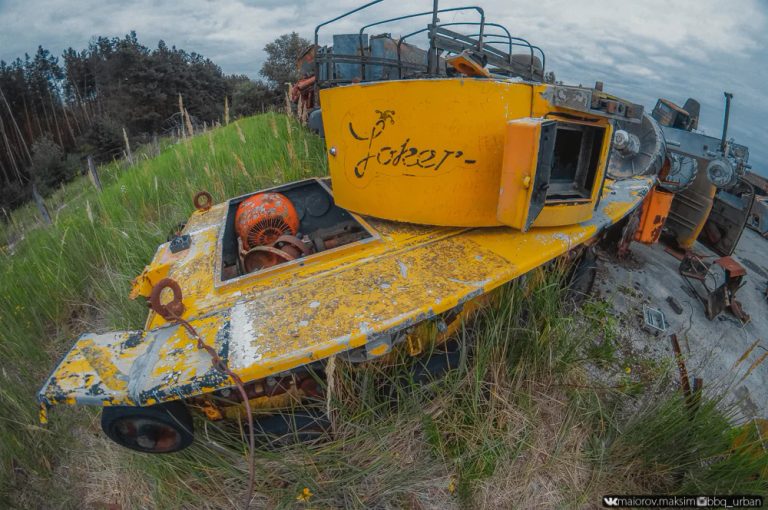Abandoned Special Purpose Research Institute
Well, the abandoned high-rise building of one of the special purpose research institutes of the Moscow region is in front of us.
There is also a testing bench with an underground part located nearby.
1. We get into the building, and then go downstairs and into the darkness. We turn on the flashlights and start walking through a huge and complex hallway system.
Having passed a number of half-flooded rooms full of all kinds of things, we finally find a relatively unobstructed hallway. The number of hermetic doors behind which experiments were once conducted is increasing.

2. Cable tunnels like this one, dozens of them, go in various directions on different levels. It is very easy to get lost in them, especially if this is your first visit.
In some spots, the cables themselves are still in place, but not here. All of this used to power the testing bench on the upper floor.

3. Through large doors we enter a small hall. There are equipment and different mechanisms remnants, all are in quite a pitiful condition.

4. Since the site was abandoned, there have been some fires. We are getting closer and closer to the core – the main hall.

5. A kingdom of scrap metal. There are cables, pipes, stairs, machines, thick metal walls all around.

6. Inside another cable tunnel.

7. The information display, a closer shot.

8. Old computing machines remnants, or maybe some other equipment. It is hard to imagine that once all of this was operational and served for scientific purposes.

8,5. Soon after we find a couple of staircases leading up a level. We go up and find ourselves in the central room of the building – a huge hall.


9. Let’s not linger in this underground kingdom of darkness and go up to the light and the surface.
Having walked through the labyrinths once again, we get out and head to the main building of the institute.

10. Just to remind you, this high-rise building used to be the chief engineering department of this research institute.
This means that there were offices, dozens of labs, classrooms, a labor protection department, records, and new technologies design departments located on its floors.
We start the tour with the upper levels and labs. On one of the tables we find lots of jars containing various metals and other substances.

11.

12. We continue exploring the labs. There are vent hoods everywhere, and other kinds of special equipment.

13. Nothing has changed in the engineering offices — there are old wooden tables, half disassembled computing machines and Soviet era diplomas on the walls.

14. There are large numbers of lab bench, blackboards and folders full of project and technology descriptions.

15. And here are some photoplates with board depictions.

16. There is still a significant supply of chemicals in the lab storages.

17. There are displays devoted to corresponding branches of the institute’s research around.

18. Greetings from the USSR.

19. We go downstairs. Some of the floors are almost entirely filled with records. There is a lot to be found inside the folders.

20. For example, trade union records of the membership fees payments and union cards.

21. Or maybe various drafts and schemes as well as descriptions of the experiments that were conducted.

22. In some of the labs there is absolute chaos: a large part of the vessels is broken, liquids and substances are splattered around, which contributes to the danger of coming here.

23. Posters again. This one, for example, tells about the cost advantages that can be achieved if the silver in the boards is replaced with a cobalt and tin alloy. Very logical indeed.

24. And here are some of the printed circuit boards themselves. There are lots of them in some of the rooms.

25. There are posters everywhere, and the atmosphere of the research institute is well-preserved. A good old Soviet calculator is in the front.

27. An old and half deteriorated microchemical balance.

28. Inside the labs you can also find foreign equipment, quite modern in their time.

29. There are also huge piles of chemical vessels, new as well as used. There are flasks, porcelain beakers, measuring tubes etc.

30. The institute still belongs to the Ministry of Defense, and probably they just don’t know what to do with it. The decades go by, the building is falling into ruin, the mold is eating away at the shelf units, books and rooms.

Images by alexdoomer2009, reproduced with permission






